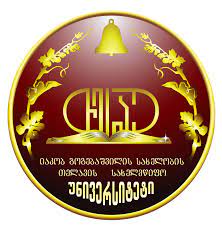ასიმილაცია შავშურ დიალექტში
DOI:
https://doi.org/10.52340/tuw.2022.08საკვანძო სიტყვები:
შავშური კილო, სამხრული დიალექტები, ასიმილაცია, კილოკავი, ხმოვანთასიმილაცია, თანხმოვანთასიმილაცია, რეგრესული ასიმილაცია.ანოტაცია
შავშურს ვუწოდებთ ისტორიული შავშეთის მკვიდრთა მეტყველებას. აღვნიშნავთ, რომ ქართულ საენათმეცნიერო ლიტერატურაში ხსენებული დიალექტის აღსანიშნავად გამოუყენებიათ ტერმინი იმერხეული კილო (ნ. მარი, ივ. გიგინეიშვილი, ვ. თოფურია, ივ. ქავთარაძე, შ. ფუტკარაძე, ტ. ფუტკარაძე...), რამდენადაც მიიჩნევდნენ, რომ ქართული მეტყველება გადარჩენილია მხოლოდ იმერხევის ხეობაში გაშენებულ ოცამდე სოფელში. ტერმინი პირველად ნ. მარმა იხმარა, სხვებმა გაიმეორეს მისი მოსაზრება. ჩვენ შემოგვაქვს ტერმინი შავშური კილო შემდეგი მოსაზრებით: ა. შავშეთი (დღევანდელი გაგებით) და იმერხევი ერთი ისტორიული ქართული ქვეყნის, შავშეთის ნაწილებია. ბ. ქართული მეტყველება ისმის არა მარტო იმერხევის ხეობაში გაშენებულ სოფლებში, არამედ მის გარეთაც: უსტამისში, ჩაქველთაში... გ. ქართული ლექსიკა დალექილია შავშთა თურქულ მეტყველებაში. დ. შავშეთის მთელს ტერიტორიაზე ჯერ კიდევ ცოცხალია ქართული ტოპონიმია; ე. შავშურის ნაწილად, როგორც კილოკავს, განვიხილავთ მაჭახლურ მეტყველებასაც. ყველა დასახელებული მიზეზის გათვალისწინებით, ვფიქრობთ, უმჯობესია გამოვიყენოთ ტერმინი შავშური კილო, რომელშიც არსებული მონაცემებით ორი კილოკავი შეიძლება გამოიყოს: იმერხეული და მაჭახლური.შავშური ქართული ენის მკვეთრად გამოხატული დიალექტია. ავტორები შავშეთის სოფლებში მოწყობილი ექსპედიციების გზით მოპოვებულ მრავალფეროვან მასალაზე დაყრდნობით მსჯელობენ ერთ ფონეტიკურ მოვლენაზე, - ასიმილაციაზე შავშურში. განიხილავენ როგორც ხმოვანთასიმილაციის, ისე თანხმოვანთასიმილაციის შემთხვევებს, იკვეთება საყურადღებო ლინგვისტური სურათი, კერძოდ: ხმოვანთა ასიმიალაცია:
აე>ეე: დეეხვევა (<დაეხვევა), წევედი (<წავედი)...
აი>ეი (>ეჲ): დეჲწავლა (<დაისწავლა), დიმინახე (<დამინახე)...
დიმივიწყდა (<დამავიწყდა), გემიგონია (გამიგონია)...
ოი>ეი (>ეჲ): მეიკიდე (<მოიკიდე), მეიტანდა (<მოიტანდა), მემიტანა (<მომიტანა)...
ოი>ეი>იი: მიმიწველია (<მემიწველია<მომიწველია)...
აუ>ოუ>უუ: უუღებენ (<ოუღებენ<აუღებენ).
ეუ>უუ: შუუჩივლია (<შეუჩივლია)...
თანხმოვანთასიმილაცია:
სღ>ზღ: ამეზღამ (შდრ. ამას ღამ)...
სჭ>შჭ: შჭამდა (<სჭამდა)....
გყ>ქყ: ქვყავდა (<გვყავდა)....
გც>ქც: მოქცემ (<მოგცემ)...
ჩანს, შავშურში ჭარბობს რეგრესული ასიმილაციის შემთხვევები.
ასიმილაციაში ხელშესახებად იკვეთება შავშურის ფონეტიკური თავისებურებანი.
##plugins.generic.usageStats.downloads##
წყაროები
ვისრამიანი. (1964). ალ. გვახარიასა და მაგალი თოდუას რედაქციით. თბილისი.
მარტიროსოვი, ა. (1953). ზმნისწინის შედგენილობა და ფუნქციები ძველ ქართულში. იკე, V: 73-94.
რუსუდანიანი. (1957). ილ. აბულაძისა და ივ. გიგინეიშვილის რედაქციით. თბილისი.
უთურგაიძე, თ. (1986). ქართული ენის სახელის მორფონოლოგიური ანალიზი, თბილისი.
ფუტკარაძე, შ. (1993). ჩვენებურების ქართული, მონოგრაფია. ბათუმი.
ფუტკარაძე, შ. (1995). ქართული ენის სამხრულ-დასავლური დიალექტების თავისებურებანი ისტორიული ტაო-კლარჯეთისა და მუჰაჯირი ქართველების მეტყველების მიხედვით. სადისერტაციო მაცნე. თბილისი.
ქავთარაძე, ი. (1964). ქართული ენის ისტორიისათვის (XII-XVIII სს). I. თბილისი:
ყარამანიანი (1985). ტექსტი გამოსაცემად მოამზადეს, წინასიტყვაობა და ლექსიკონი დაურთეს ა. გვახარიამ და ს. ცაიშვილმა. თბილისი.
ცინცაძე, მ., ფაღავა, მ. (1998). სამხრული დიალექტები და ქართული სამწერლობო ენა, (V-XVIII სს). ბათუმი: ბსუ გამომცემლობა.
ძიძიშვილი, მ. (1960). ფონეტიკური პროცესები ძველ ქართულში. თბილისი.
ხონელი მ. (1969). ამირანდარეჯანიანი. გამოსაცემად მოამზადა ლ. ათანელაშვილმა, თბილისი.






